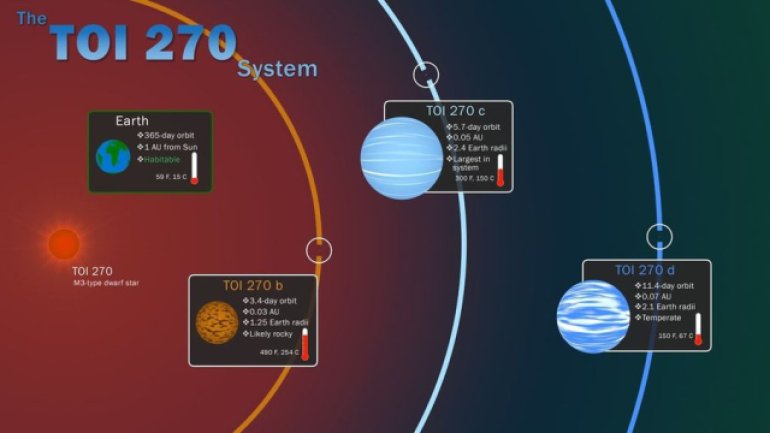A team of researchers from the Laboratory of High Energy and Astrophysics from the University of Qadi Ayadh and the Observatory of Okeemden, in cooperation with a researcher from a laboratory of the American Space Agency (NASA) and a researcher from Harvard University in the United States, have been able to detect the properties of the atmosphere of a planet outside the solar system.
"This is the first time that a Moroccan research team has been able to discover the properties of the atmosphere of planets outside the solar system," Zuhair bin Khaldoun, director of the Okiemden Observatory for Astronomical Observations at Qadi Ayyad University in Marrakech, told Al Jazeera Net.
According to Bin Khaldoun, "The aim of the study concerned is to simulate the ability of the James Webb Space Telescope (JWST) to detect vital signs in the atmosphere of an exoplanet system, recently discovered with the participation of the Obsidian Observatory."
Water in the atmosphere
The study focused on one of a specific type of exoplanet called "Sub-Neptune" - or "without Neptune" - and these planets are characterized by properties that can make them an appropriate medium for the presence of water in the liquid state, which makes their study important According to Jamila Chaouker, a PhD researcher at the Laboratory of High Energy and Astrophysics of the University of El-Qadi Ayyad in Marrakech, which studies "the atmosphere of planets outside the solar system."
"We aim in this study to uncover the chemical and thermal structure of the atmosphere of these planets, to reveal its chemical components, including those that are necessary for life, as well as changes in its temperature degrees, which gives us an idea of whether these planets provide conditions suitable for life or not."
Zuhair bin Khaldoun says, "It was fortunate for her to have this new discovery that she was able to apply to these models that she works on, and this is important to her and will successfully crown her thesis."
The research team in this study consists of two doctoral students and two research professors from the High Energy Physics and Astrophysics Laboratory at Qadi Ayyad University and the Oakemden Observatory, in addition to a researcher from a NASA laboratory and another from Harvard University.
James Web Database
"We expect these results to provide useful predictions to the scientific community, which might suggest the use of a space telescope, James Webb, to detect the atmosphere of these planets," said the press release published by the Moroccan research team at the University of El-Qadi Ayadh and the Observatory of Oakemden.
"This study provides a scientific basis and database from which the James Webb telescope team, which consists of several diverse international teams from space agencies, will be launched to program the planets and stars that will be monitored by the telescope for the year 2021 with accurate scientific data."
"This discovery is a precedent for a Moroccan research team studying the atmosphere of planets outside the solar system," Bin Khaldoun added - speaking to Al Jazeera Net on the phone.
The results of the study, published in the journal "Mentally Notices of the Royal Astronomical Society" on May 2, indicate that small Neptune planets outside the solar system may be water planets unlike gas dwarf planets.
Some of the smaller Neptune's planets can be major targets of James Webb spacecraft observation.
"We are anxiously awaiting the launch of the James Webb telescope, which will revolutionize our knowledge of exoplanets in particular, as it will allow us to observe the TOI-270 planet system that was researched in this study with this telescope, to confirm our results," he said.

